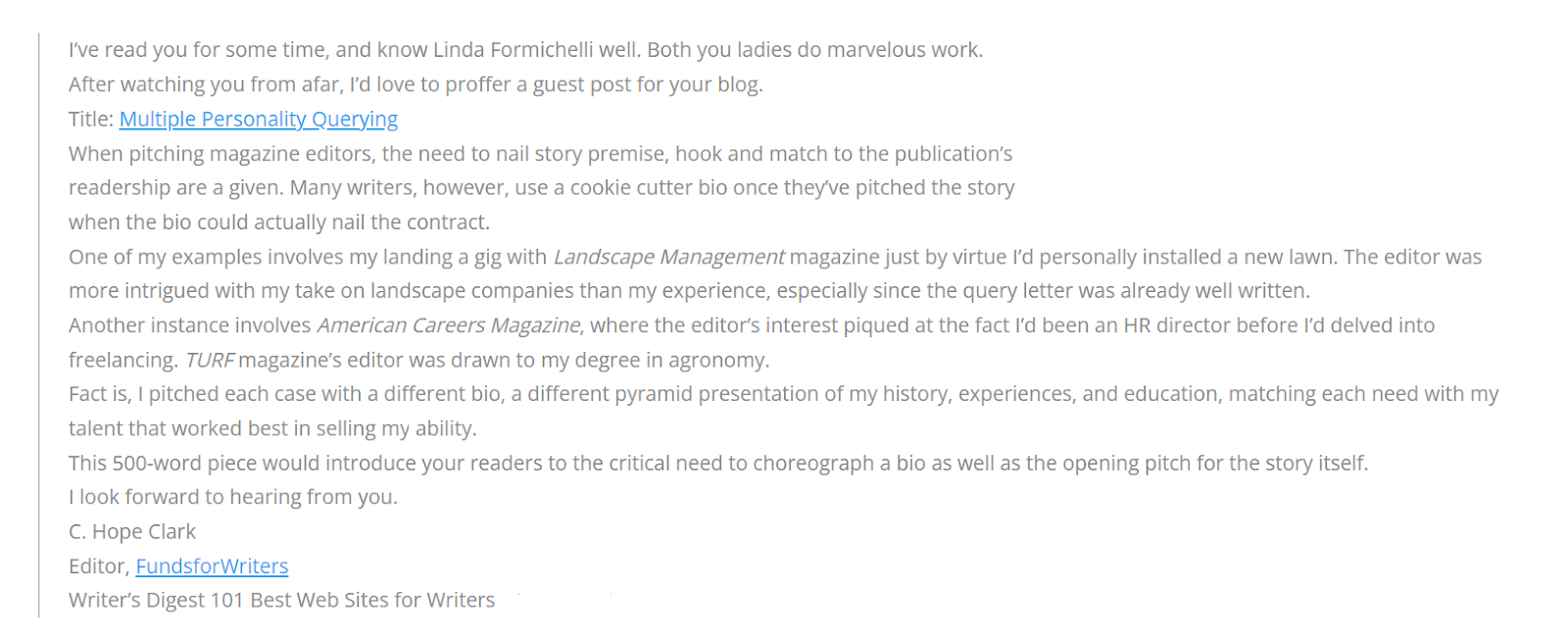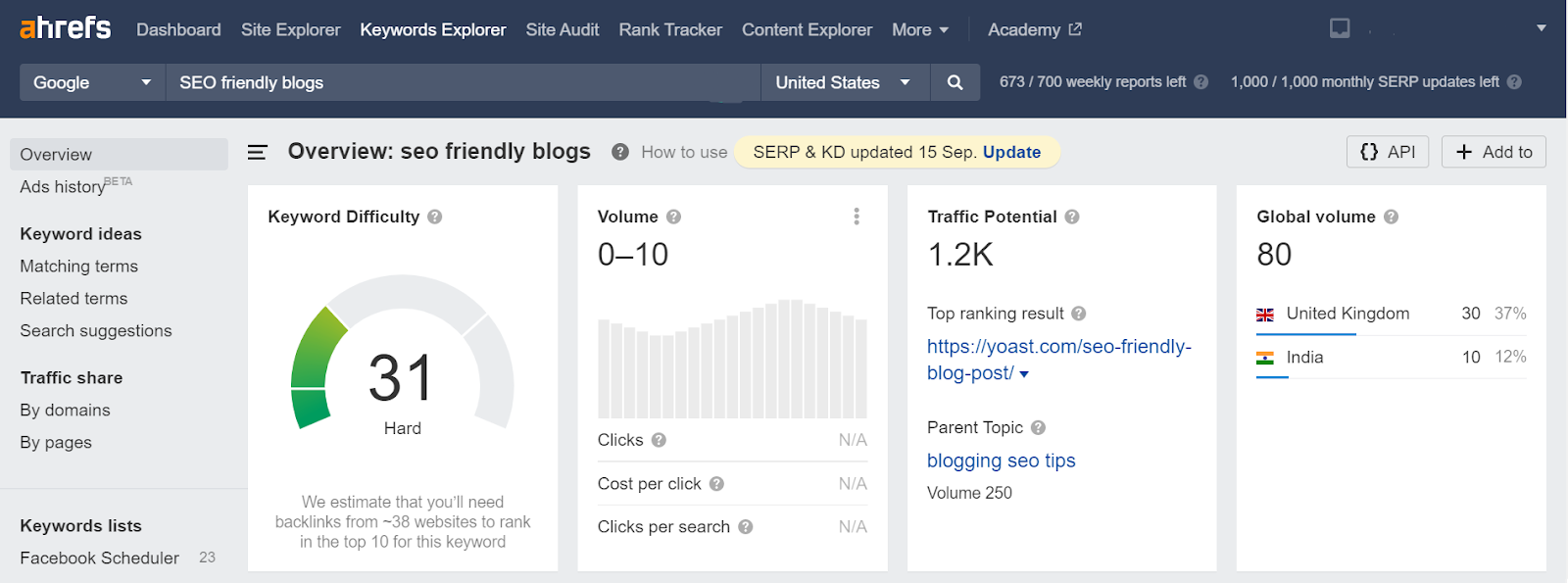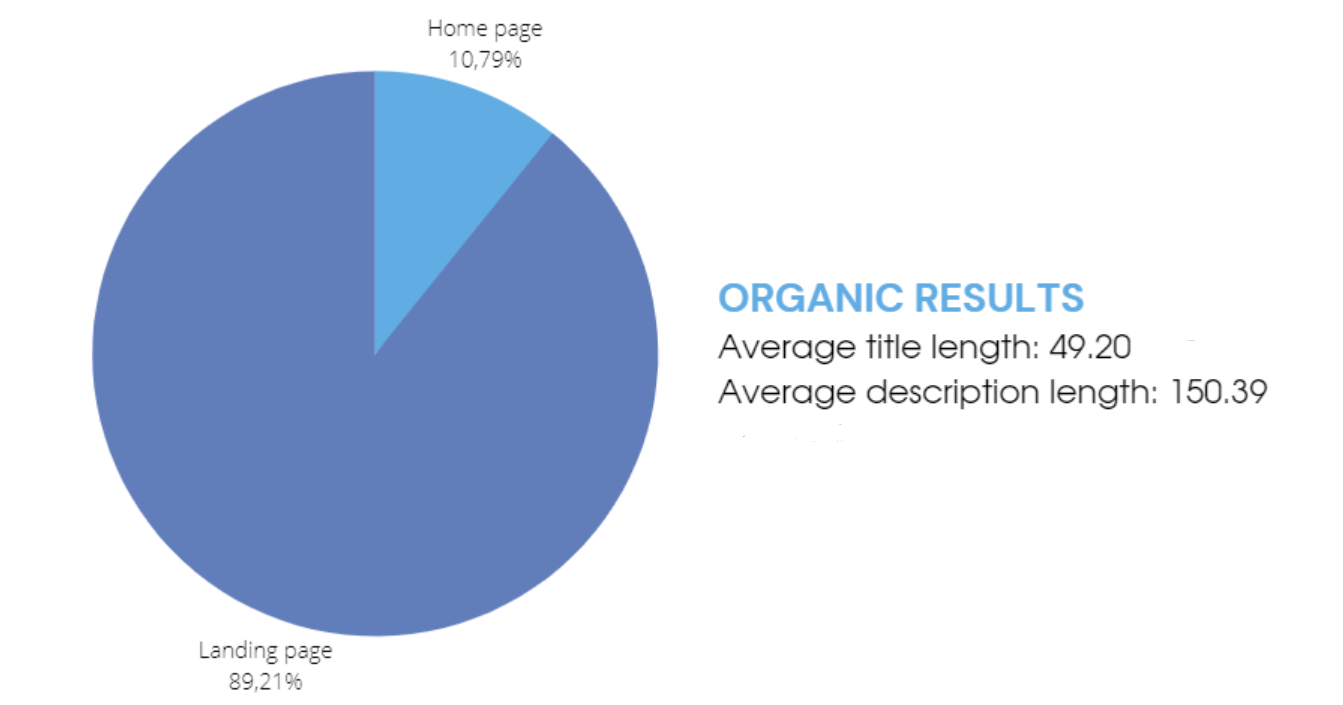If you're a content marketer, you must know that blogging is your best friend. And guest posting is a great way to get your hands on quality blog posts.
According to a study, 87% of bloggers come up with their own content ideas, but only 52% write their own content. How do you think the remaining blogs get written?
Guest bloggers, of course.
Exchanging guest blogging opportunities is an effective way to build relationships with other bloggers, get links to your website, and improve your visibility in search engines. Guest blogging started out as a simple exchange.
In the past, marketers didn't put a lot of thought into how to write a guest post. Their primary objective was to pump out blog posts to build backlinks as much as possible. Even if the quality of those links was questionable, very few cared as long as they earned results.
Not much was involved in the effort but connecting with bloggers, providing them content that was exciting and well-written, relevant to them, publishing it on their site, and you getting a link in return.
Well, not so much anymore.
With the ever-evolving SEO landscape, it's now become an essential part of digital marketing. How you craft your piece holds great importance.
Quality Guest post for the win!
The demand in quantity has stayed the same, seeing as more than 70 million posts are being published by WordPress users monthly.
But lack of quality in guest posting is no longer overlooked.
You need to figure out how to consistently write great guest posts to reap the benefits. If you ignore this aspect, your content will become the proverbial needle in the haystack no one would even be looking for.
And to look at the bigger picture, many things changed in the past decade leading to a decline in the initial value proposition of guest blogging.
- Conversations moved from blog comments to social media
- Valuable guest bloggers were replaced by SEO outreach people
- Due to restrictions on black hat SEO activities, demand for guest posting took a hit
- Google's useful content, search intent, and topical authority updates drove website owners to keep content inhouse
So you see, the trends have changed entirely in the last few decades, and guest blogging found itself somewhat on the proverbial lower ground.
But has it lost the game completely?
Not by a long shot.
Since quality won over quantity, every step of writing a guest post came under laser-sharp scrutiny. Be it pitching one, the writing process, or the backlink building from it.
Pitching your guest post is the first hurdle you have to cross. Overall, getting guest post pitches accepted on authority websites has become more challenging.
Are you facing frequent rejections at this stage? I will explain why and how to nail down your pitch so you can move ahead and write a great guest post.
How to get your guest post pitch accepted
The mistake that people often make is thinking that sending a pitch will automatically get their article accepted. If you are waiting for a positive response from a blogger just because you sent a pitch, you'll be waiting for a long time.
Most of the time, the summary of a pitch screams the same message,
"I don't know a thing about your blog's content, but your website's authority is high. So I would like to write for you."
Believe me, you don't want to sound this presumptuous. Hence it will be beneficial to dig a little deeper to craft your pitch to perfection.
This will not do!
- Find relevant websites who are open to pitches
Imagine you work really hard to write a guest post but no one reads it. Wouldn’t that sting? But this is a very probable scenario if you pick the wrong website to post on.
Before sending their pitch, most guest bloggers don't even inquire whether they are open to pitches. Don't make the same mistake others do.
To find websites who are accepting pitches the easiest thing would be type in your keywords in the Google search bar and add any of the following after them:
- + “write for us”
- + “submit an article”
- + “contribute to our blog”
- + “guest author”
You get the drift right? It’s about trial and error with keywords to find websites perfect for your niche and whether they are receptive to pitches or not.
- Take a more personalized approach
Why do you think pitching is the stage where maximum outreach efforts fail?
Owners of credible websites receive anywhere from 5 to 35 requests for collaboration. All they want is to write a guest post for them.
In this scenario, your pitching is all you have to play on. If you don't personalize your email to the blogger you pitch to, you might forget about getting your guest posts approved.
So go ahead and use all the resources you have in your arsenal. Find the blogger's name and use open sources like LinkedIn to look into their professional history, what sort of projects they have been into, etc.
And last but not least, read a couple of their recent articles and some of their older work. This will give you something to talk about, find common ground even.
Here's an example of a pitch that won the blogger over and got the writer a guest post:

- Show your previous work
The publisher doesn't know you or your capabilities as a successful guest post writer. So remember to include links to your previously written and published content to display the quality you can provide them. If these pieces have been published on quality websites, that will earn you extra brownie points.
- Proper keyword analysis
Now that you have marketed yourself, it's time to give them something they can't refuse. To be a good guest post writer, you have to know how to fill the gaps which the publisher's content has.
An excellent way to do that is by tapping into keywords that have not been used on that website. Tools like Semrush and Ahrefs are aces when it comes to finding out what is working.
There are nearly 89,409 Google searches per second, so the chances of options running out are not very likely.
Keeping all of this in mind, write an airtight pitch and put out the message that you are in town to write a great guest post.
And then it's a waiting game. The responses might be scarce as it is a cutthroat arena. But a few replies are an excellent place to start. Remember, you are here to provide quality and not quantity.
More reading: How to guest post and guest posting best practices.
Keep your eyes on the price and start writing a good guest blog!
How to Write a Guest Blog Post
So you have won the first, albeit the most challenging round, on comes the responsibility. It is time to get to work. When you start with your guest post, do it with the intention of getting it to the top of the SERP. That is the purpose of any writer creating an intent-centric blog.
If your primary keyword is approved by the publisher, start by ensuring and then double-checking its contextual relevance to the website.
If the proverbial bones of your blog are strong, only then will it stand a chance to rise in the SEO ranks.
In their quest for keyword exploration, I, and every other writer out there, looks at the search volume and ranking difficulty. These are two famous metrics given in the Keyword Explorer in Ahrefs.
Look here at the numbers for the keyword Instagram story ideas:

The volume of this keyword is very high, meaning many search for it. What does that tell you?
You may see something else, but it indicates an extremely common keyword appearing on almost 9 thousand people's search results.
Would running after a keyword like that be beneficial for you?
The answer is not easy to predict, but the competition to rank for this would be tooth and nail, and the chances of you coming on top are slim.
Now let's look at another keyword and its metrics:

The keyword difficulty for this is a tad bit less, but the search volume is drastically different. Very few people are searching for this.
But whoever is searching for it has a very specific requirement and strong intent behind it. These are the type of keywords you should be going after.
It is always better to focus on a narrower demographic when it comes to audience targeting. It generates better quality leads that have a better chance of converting.
Another way to make your keywords count is going for long-tail keywords. These keywords are more of a phrase than words and contain more than 3 words on average.
Most Google searches are made of long-tail keywords. That's because people want to be as specific as possible when looking for answers. Integrating long-tail keywords into the post gives it the more significant potential of being found by searchers.
So much so that 92.42% of them have less than 10 for search volume in a single month.
So imagine that you went with such a keyword which, alongside being topically and thematically relevant to your publisher's content strategy, is also the sole focus of the query of these visitors. The website visits your content brings will have true potential to convert.
Along with high potential long tail keywords, fortify your content by selecting some short tail ones as secondary keywords. Try out different variations of your primary keyword to find these. They can be instrumental in directing a confused searcher in your direction.
If that's not bringing value, then I don't know what else is.
Takeaways:
- Going with lesser popular keywords will get you quality leads if that's what you're after.
- Match visitors' search intent precisely with long tail keywords and rank where you need to.
- Use some short-tail keywords to support your primary keyword.
Carve out a concrete outline
When you are out to cook something with perfection, you'll feel a lot more confident if you have a proper recipe in your hand. You are bound to make fewer mistakes with it.
An outline for a blog works the same way. Before you start writing, work on your outline first and foremost. Hammer it to perfection. Then all you have to do is follow it through, and it'll give you the results which you had envisioned and pitched to your publisher.
When you make your outline, remember that it has to be a comprehensive guide to you thematically and help make your content as SEO-friendly as possible.
Achieving a successful outline involves some research! You have to find out what sort of content is ranking and what sort of information it covers.
Your goal out there won't be to invent brand new content but to put your own spin on the things already there and add value to it.
So google your primary keyword and read through the top 10 search results. Study how they have structured their blogs. Because different pieces take different approaches to their content.
The piece might be in the form of tips and hacks or divided into "X Steps to achieve…" with a specific chronological order. How you structure your content to write a good guest post is totally up to you.
Usually, I used to take the top 5 search results and jot down all their headings and subheadings into an Excel sheet. This offers me all the information I need at a glance. Plenty of insight to pick and choose from for my own content.
But why take all that hassle when there is a more convenient way to do it? Tools available can scoop out the Htags from a webpage with just a few clicks. Frase and Ahrefs are my go-to for this purpose now. Frase gives you the outline of the top 20 search results, and you can make your outline in the tool.
Here is the Ahrefs Chrome extension doing the same:


You've got this, and with a bit of hard work and creativity, you can create fantastic content that will draw in loyal readers.
Takeaways:
- Create a solid outline before starting to write a guest post.
- Study the ranking blogs and list the headings and subheadings they included in their content.
- Mix and match them to create an outline perfect for your blog post.
- There are many tools to help you build an outline
Add important data to your outline
Most writers skip this step. As soon as they have their outline place, they would rush straight ahead into writing their guest post. But I say, the pre-prep for writing is not over yet.
During the entirety of your research, you have consumed a lot of information, all of which will come in handy as it helps form a perspective and write your own content. But data and facts are something that is nothing to be shaped into. But quoting them can add value to your piece like nothing else.
Before you get to the main event, collect important information and data you can add when you write the guest post. Add this information under suitable headers in your outline using bullet points. These can range from
- Statistical data
- Trending industry news
- Actual quotes from niche experts
- Questions you want to raise
- Links to exciting reads related to your blog's subject matter
- Handy and insightful tools
And the list goes on.
Now I would say you are ready to start.
Write a strong introduction
This is the first thing your reader will see after the title as they establish the tone of the article and should detail what readers can expect.
So make sure to pack a punch into your intro section. By that, I mean it should be catchy and interesting enough, so the reader is enticed to continue with the blog.
If your intro doesn't hold enough promise to address the questions the reader wants to be answered, you will lose them early on. And you absolutely can't let that happen.
Keep your introduction short. A long start to any article bores readers away. Just like a movie trailer, keep everything private in the beginning. Hint at what problem you will address, tease the main content, and conclude the introduction. Nothing more, nothing less.
Now to make your intro section strong from the SEO standpoint, here are a few things to keep in mind:
- Keep your introduction 3 to 4 paragraphs long
- The primary keyword should make an appearance within the first 100 words.
- Add an interesting fact that links out to an established source.
- Secondary keywords in this section are an advantage but not a necessity.
If you keep all of this in mind, you will be able to compose an effective introduction.
Now you can dive head-first into writing the main body of your guest post.
Write the rest of the main article
Now it's time to write the rest of your blog, you have to follow your roadmap, i.e., the outline you have meticulously created. It should be easy as cake, right?
Well, almost.
I don't mean to scare you. Yes, now is the easier part of the whole process, as all you have to do as a writer is let the content flow, and the outline will guide you. But your content has to satisfy the reader as well as the search engine algorithm, so optimize your content accordingly.
Appearance matters
Making your content readable is important. To do that, you have to make it look less. This might not make sense to you, so let me explain.
If your content looks text-heavy, with long paragraphs without any breaks, it'll seem like a chore to read. Even if you write a great guest post, the reader will be repelled from reading the whole thing.
To keep this from happening, you must structure and section your content so that it does not look lengthy, even if it is a 3000-word blog.
Here are a few tricks up my sleeve to make long-form content look more digestible:
- Divide the content into many smaller sub-headings.
- Keep your paragraphs within 3 to 4 lines.
- Make your sentences smaller.
- Use bullet points whenever possible to cut off fluff.
- Highlight important parts by using bold and Italic fonts.
- Use infographics to keep the reader engaged.
- Use some entertaining graphics to give the reader a break.
Implement these tips into your writing and trust me, you will be able to see the difference yourself.
Add numbers
As mentioned in the previous section, statistical data adds value to your content. People trust numbers as they are scalable and solid proof of what you are trying to convey in words.
So whenever you mention a fact, try to back it up with figures. These numbers are not to be taken from unreliable sources. You must cite websites with authority, so people are confident in your credibility.
Interlinking
Find appropriate opportunities in your content and interlink with other articles in the domain for which you write. This is good etiquette. It will come off as a sign of goodwill, and your host blogger will appreciate the gesture.
Mention big bloggers in your niche
Quoting the experts will get you brownie points, always. If you are targeting an audience who are strictly of a niche, they probably know the name of the authority figures of the industry.
If you are from the content marketing industry, surely you know Neil Patel and Brian Dean. Hence don't hesitate to take names in your content. It will give your credibility a sure-shot boost.
Lengthy does not always win the game
I know it is tempting to write lengthy posts since Google tends to give longer content more preference. But making your article bulky just for the sake of ranking is not such a good idea!
Here's a quote from Dr. Seuss to sum it up:
"So the writer who breeds more words than he needs, is making a chore for the reader who reads."
If you ramble on just for the sake of it, it won't take long for people to jump right out of your page. Then what is the use of ranking if you fail to capture the audience?
So it is better to keep your eyes on the price. Keep it crisp & witty, and trim out the excess.
According to a study by HubSpot in 2021, the ideal blog post length for SEO should be 2,100-2,400 words.
Don't forget the visuals
Writers become so focused on their content that they tend to forget the rest. But the visual experience of an article is as essential to keep the user reading as the content is. So not adding images to your guest post is an absolute folly.
According to Jeff Bullas, blogs with images get 94% more total views than articles without images.
So while you write a guest post, remember to sprinkle it with relevant images. I have already mentioned including infographics earlier. You can place graphs and charts wherever you find suitable. This helps make your blog look less text-heavy.
Make conversation, not a monologue
One thing a reader hates is being talked at rather than talked to. Writing in a monotonous voice will kill the interest of anyone who comes to your article.
Gone are the days when you could just make a statement in your article and leave. Now you have to write in a conversational tone so the reader feels more engaged in the content rather than just skimming through it.
Here is another small tip to write a successful guest post. Use jargon sparingly. Your reader might be a complete stranger to complicated industry-related terms. So filling your guest posts with them might deter the reader from the content.
On-page optimization
After you are done writing, take care of the basics of the on-page optimization. Make sure you have included the primary keyword in the headings and subheadings. No need to stuff your article unnecessarily with them.
Here are the thing you got to remember at a glance:
- Keyword density- 1-3%
- Meta title- below 70 characters
- Meta description- 150-160 characters

- H1, H2 and H3 tags
- Alt texts for images
- URL of the page
Being a guest post writer, you need to readily provide these essentials to your publisher. It'll establish a good image for you and open chances of them wanting to collaborate with you again.
Speaking from experience, establishing good and lasting relations is very important in this profession.
Proofread
This one goes without saying- proofread your blog post, for it is the final stage of writing a blog post.
It is very common and understandable that working on the same guest post might get monotonous for you. And it gets difficult for writers to find fault in their own creations, speaking from experience.
Here's the solution.
After you are done with all the work, take a few hours to get away. Then come back with a fresh mind to read the whole thing again. Some time off the same piece will help you get a fresh perspective and make editing it easier.
Grammarly Is a God-send for checking grammatical errors and making tweaks in your content to polish it to perfection.
Tips for what to do after it's published
- Alert others you mentioned to get it shared. It's important that you give yourself some publicity, so people know who wrote it and are more likely to remember you in the future. Use social media platforms like Twitter and Facebook for this purpose and link back to your own blog or website if you have one.
- Monitor its rankings so you can report it to the publisher and use it bragging in future pitches.
- Secure more opportunities and try to write sister posts that build out your authority for this topic.
Wrap Up
Armed with all these tips and instructions, I'm sure you are ready to write a great guest post. Writing for someone else's blog is a responsibility. So make sure you match their brand tone and style of content.
Your skill as a guest blogger and the fool-proof research will give results that will for sure bring those leads and conversions which you seek. Remember, quality and not quantity is what you should be after.




























